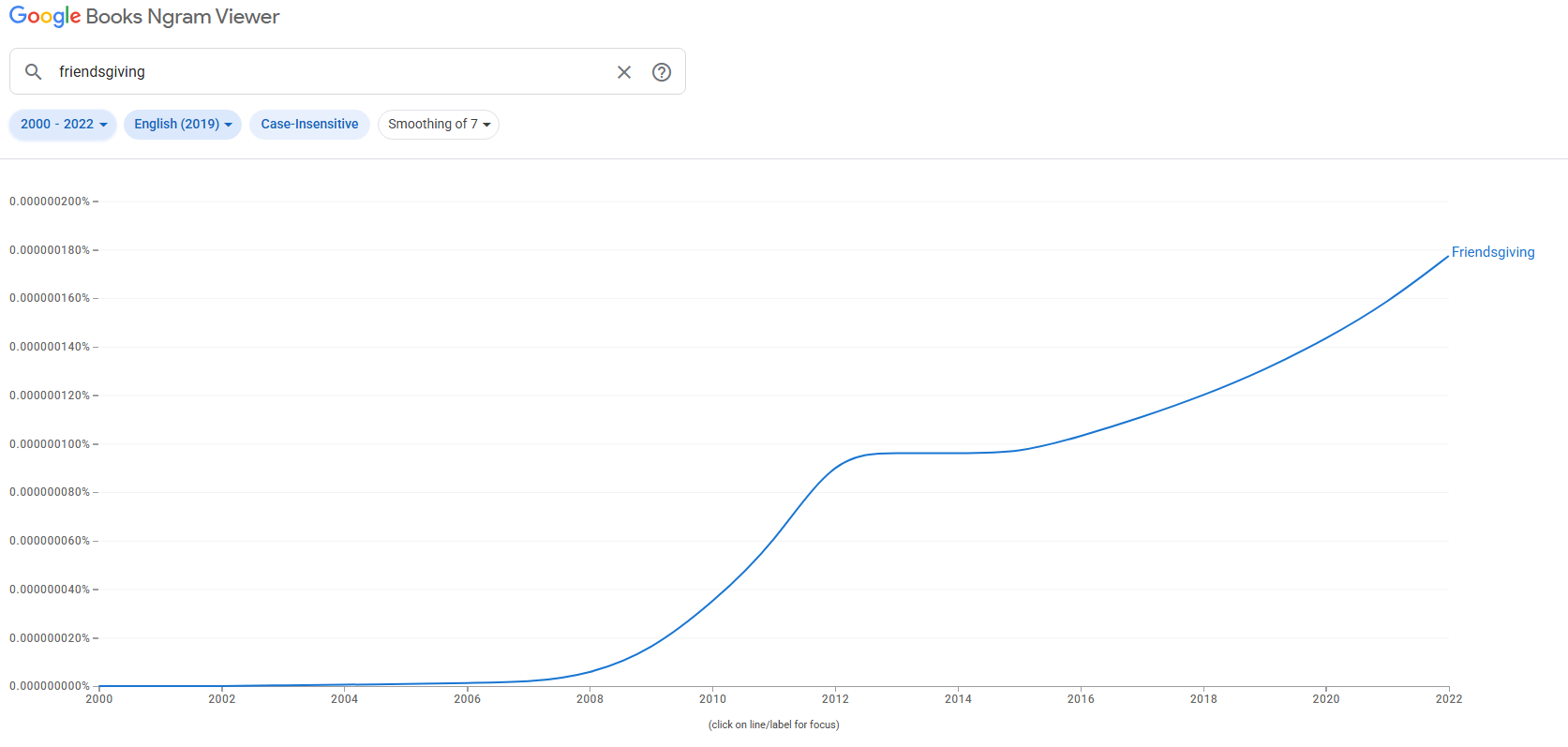
I was sent this meme the other day, just in time for the Thanksgiving season. For starters, it had me WEAK, and I thought other New Yorkers would get a kick out of it too, so I shared it. But then it got me thinking, “well, Friendsgiving is something native New Yorkers and transplants engage in right? Surely there’s no harm in that.” Fast forward a couple of days and a couple of conversations about our favorite new holiday gathering, and here comes this article.
So what exactly is “Friendsgiving” anyway? It’s essentially right in the name, Thanksgiving, but for friends; a cute rebrand of the traditional potluck, taking place in the month of November around Thanksgiving season. The word started really catching on around the 2010s, although the 2020s is when we really see it catch on as a cultural phenomenon.

I think the real reason Friendsgivings are catching on these days, outside of the popularity on social media, is the community and agency it provides everyone involved. New York’s 20 and 30 somethings get the opportunity to host friends at a dinner party at theirs, show off their cooking skills, and share parts of their cultural identity. I think it allows us to live into that attitude of “being grown and doing grown people things” where in some aspects of life, we feel like we may not have a solid grasp on that feeling. Personally, I’m the salad and greens guy; no one EVER thinks to prepare some healthy greenery for some reason, so I make sure me and mine keep a balanced plate (also, it’s easy lol).
All in all, I think Friendsgiving is a net positive for our generation of young adults. For a transplant or a native New Yorker, a Friendsgiving banquet gives everyone a seat at the table and a place to belong. But don’t just take it from me, see what your fellow New Yorkers have to say about Friendsgiving from their own POV:
What is the best/worst thing you've brought or seen brought to Friendsgiving?
Jayquel (@jayquelmichael)
Homemade roast duck that someone else made, so fire. Best thing I ever made, a Vegan candied yams. I threw some Henny in that b*tch, I got the recipe off of Masego's Instagram.
Worst in general, just dont f*ck up the mac n cheese.
Sarah (@sarahcreadir)
Best thing: Buffalo chicken dip
Worst thing: ritz crackers (ik)
What is the best thing about a NYC Friendsgiving, in your opinion?
Kyle (@superduperkay)
Best: Having it. Having a successful gathering with all of your people under your roof. The best feeling ever. Oh yea....the Alcohol too.
Worst: Cleaning up afterwards. Also planning it and knowing your squad is a bunch of procrastinators so you might not know who is coming or what they are bring till like the day of.
Hunter (@_huntro)
I think what I appreciate about Friendsgiving is the variety. Everybody is bringing a dish that's connected to them culturally or through their own family history or just something that they have a connection with themselves. You get little pieces of everybody's holiday mixed into one. And especially as someone about to enter their 30s. It's a combination of the pride and success at hosting a Friendsgiving combined with getting to actually share space and community with friends.
Sarah
Best thing: getting crammed together in a tiny apartment but feeling the love tenfold
Jayquel
I think the best thing about a NYC Friendsgiving is having a large friend group and community that you can rely on despite all the turbulence going on in your life, trying to see family at the same time. It's great to come together with your community and break-bread. Shout out all my transplant homies who put me on.
Bianca (@binkybabble)
I went to one with close friends! We were all encouraged to make food from our own culture. I brought kheer that I made myself - it was incredible since not only did I make it in a way only I like, it was satisfying to hear people’s thoughts and cultural comparisons on it and realize they genuinely enjoyed it too. A NYC Friendsgiving has the potential to be a cultural hodgepodge of all the things we love and make — whether homemade or bought, it is all with thought, care and love. In a city with so much great food, it’s hard not to imagine how preciously delicious it already is
Do you think Friendsgivings are a social media fad or cultural phenomenon that's here to stay?
Hunter
I think it's definitely here to stay. If you want to get real anthropological about it, back in the 50s, the family unit was Mom and Dad and the kids and maybe one extended family member at a stretch. Nowadays, especially in New York Citv and other urban areas, a lot of people are relying more on their found and chosen family than their biological family.
In my opinion, this kind of speaks to the rebranding of Thanksgiving that I've done in my mind. Of course, the way the colonizers treated the native Americans was terrible and the idea of teaching kids that everything was fine and friendly is wrong. But I appreciate the holiday and time to be thankful for what I have in life and to take a breath and share space and food with people that matter to me in my life.
How lit are you supposed to get at Friendsgiving?
Jayquel
Do you wanna get "I'll see you next week" lit, "I'll see you after Christmas" lit, or "I'll see you next Friendsgiving" lit?

Like our work? Follow us on Instagram and Subscribe to our Newsletter!



